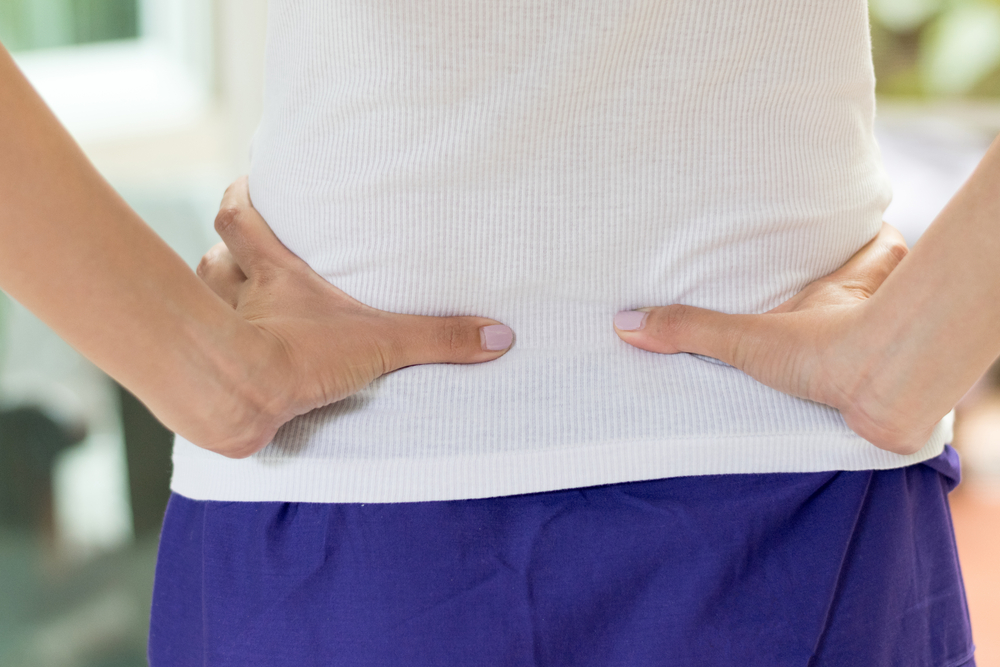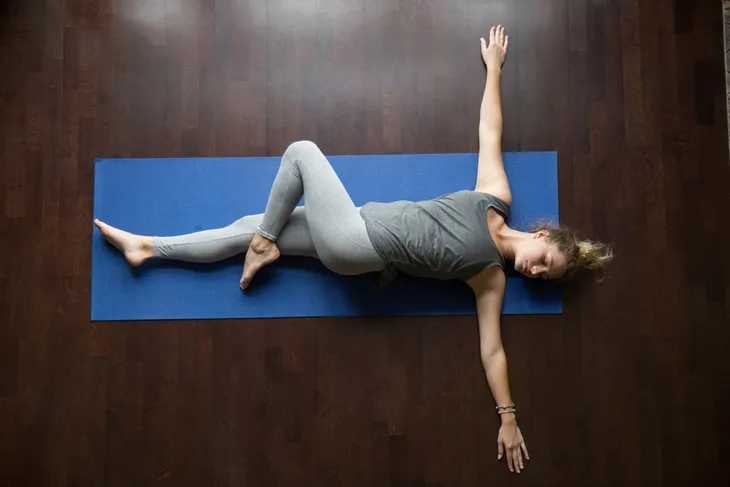Lumbar stenosis is a type of spinal stenosis, a condition that affects the spine by narrowing the spinal columns and pressing on the spinal cord. Lumbar stenosis is the most common form of spinal stenosis and unlike its counterpart — cervical stenosis which occurs in the neck, lumbar is located in the lower back. It’s not a particularly common condition which might be why you’ve never heard of it before! However, it is an unfortunate reality for some people and it does require treatment.
If you’re suffering from lumbar stenosis, you’ll be waiting a long time before it goes away on its own. People who have this condition go on to live very healthy, and even active lives, but it does require some lifestyle changes. Here are some tips for anyone who has lumbar stenosis…
Don’t Ignore Your Symptoms
Our first recommendation is to not ignore the symptoms. Anyone who has lumbar stenosis needs to consult with a doctor to help manage their pain and monitor the condition as it is a progressive condition. As we age, it’s easy to ignore the aches and pains that come and go. Lumbar spinal stenosis causes some uncomfortable leg and back pain, but unlike just any other sore back, this pain won’t go away. In fact, if nothing is done about it, it will often just get worse.
Even though this is a progressive condition, Very Well Health explains that there are many things a patient can do to better their condition. “Engaging in an exercise program often helps to improve mobility and decrease back and leg pain,” writes the source. “Working to improve your strength and range of motion can help you walk better with less pain.” Being proactive about your health is one of the best things you can do for lumbar spinal stenosis.
Stretch on a Regular Basis
Stretching is a great way to get the body better prepared to start exercising (which we’ll get into more later) and improve flexibility. It will help ease some of the pain and stiffness that comes with lumbar stenosis and increase range of motion. Stretching is something that should be done everyday, but is especially important after workouts and to help ease into a workout. You can also help relieve stress by focusing on breathing while stretching.
Dr. Axe provides some examples of stretches that can help relieve back or sciatic pain, like “sitting leg stretches, knee to chest stretches on the floor, back stretches done while laying on the stomach and lifting the chest or legs, quadricep stretches, which can be done by standing, bending one knee and pulling the foot behind you.”
The biggest benefit of stretching is improving range of motion and mobility because this helps with lower back pain, which is one of the most common symptoms of spinal stenosis. In order to find out more about what stretches you should be doing, make an appointment with a physical therapist to first get an evaluation on your condition. Afterwards, they can provide some specific tips on what exercises would be most beneficial for you and the state of your condition.
Maintain a Healthy Weight
There are many reasons a person should work towards maintaining a healthy weight, but it’s particularly important for someone who suffers from lumbar stenosis. It can not only help stop spinal stenosis from developing, but also help relieve the pain. Carrying around extra body weight puts a big strain on the body, particularly the joints and the spine.
“It can also impede exercising with good form, which is a practice that develops overall strength, flexibility, back support, and the ability to get through the day with minimal muscle fatigue,” writes Very Well Health.
Eat an Anti-Inflammatory Diet
We often hear about medication that can help reduce inflammation or remedies like using a cold compress, but actually the food we eat has a lot to do with inflammation in the body. When it comes to lumbar stenosis, some of the best things a person can do is lose weight, exercise regularly, and eat healthy.
“A healthy diet also helps maintain muscle mass and protects you from experiencing very high levels of inflammation or complications that can make stenosis worse,” explains Dr. Axe. “High levels of inflammation weaken your bones, muscles and joints, which makes it more likely that you’ll deal with spinal problems as you age.”
When it comes to diet and inflammation, Dr. Axe recommends eating less sugar, processed meats, chemically sprayed crops, refined grain products, alcohol, and packaged snacks that are often high in sodium. Instead eat more foods like leafy green vegetables, healthy fats like extra virgin olive oil and coconut oil, eat lean proteins like eggs, grass-fed meat, wild-caught fish, as well as fermented foods that contain probiotics.
You should consider taking supplements that reduce pain like turmeric, omega-3 fish oils, glucosamine, MSM and proteolytic enzymes. As with any other condition, avoid smoking, doing any kind of recreational drugs, and try to take care of yourself by reducing stress and getting lots of sleep.
Don’t Only Treat the Inflammation
As we mentioned earlier, lumbar stenosis is a condition that affects the spine. Even though the spine is strong enough to support our posture and back, it’s also very delicate with nerves running through the vertebrae. These nerves conduct signals to the brain and the rest of the body. When spinal stenosis causes narrowing of the spinal canal, this explains why it irritates the nerves and causes symptoms that run down into the legs. The symptoms of lumbar stenosis tend to worsen with activity like walking, but feel better when sitting down or bending forward. “When your nerves become irritated, they may be inflamed, and taking anti-inflammatory medication can temporarily improve your condition,” writes VeryWell Health.
While treating the inflammation of spinal stenosis is important, it’s not the most important thing to do. You also need to be doing exercises that will help improve flexibility and how the spine moves. Very Well Health describes it as changing the biomechanics of the spine. This can be accomplished with exercises (which we will get to next), and postural correction.
Get Regular Exercise
Not surprisingly, lumbar spinal stenosis can make exercising extremely painful. Even just moving around is difficult. Unfortunately, this is also one of the best things for lumbar stenosis. Even people who don’t have this condition, should be exercising on a regular basis to improve flexibility, balance, and strengthen the body to prevent injuries. If you were someone who didn’t put a lot of emphasis on exercise before developing this condition, you need to start now. It doesn’t take a lot and if you’re experiencing a lot of pain, you need to take it slow. Start with something simple like walking, and do it for a few minutes a day, building yourself up to 30 minutes a day, three times a week. If walking is too painful, Healthline recommends taking the exercise into the pool. “The buoyancy of the water makes it easier to move and get full range of motion.”
You’ll want to pick exercises that work on strengthening the back and your abdominal muscles. We’ll get into the specifics in the next slide, but you should also consult with your doctor or physical therapist about what would be most appropriate for you. If your condition is severe, you might need a little assistance from a back brace.
Don’t Only Do Flexion Exercises
First let’s define what flexion exercises because most people probably don’t know what these are! Flexion exercises are a set or system of exercises designed to enhance lumbar flexion and manage low back pain by bending forward. They are often prescribed to people with lower back pain, sciatic pain, or lumbar stenosis. These types of exercises are good for you because bending forward increases the spinal canal diameter, explains VeryWell Health, and takes pressure off spinal nerves.
While these exercises are great for lumbar stenosis, the source notes that there are other exercises that can also be beneficial, like bending backward with sustained standing lumbar extension. “This exercise can gently press against your spinal discs, moving them away from your spinal canal and nerves to give them more room,” writes the source. “Talk to your physical therapist about how spinal extension exercises are done and whether these may be of benefit to you.”
Quit Smoking
It’s no secret that smoking is bad. We’ve heard all about the dangers of smoking for quite some time now, particularly when it comes to cancer. But did you know that smoking can also cause other health concerns and lead to things like back pain? “Smoking might cause degenerative changes by constricting blood vessels that feed your spine,” writes VeryWell Health. “Not only that, but it can amplify pain perception.”
A patient that needs to have a spinal fusion will most likely have to quit smoking before the operation can be done. This is due to the fact that smoking slows down bone healing. In fact, in the article “Revision Strategies for Lumbar Pseudarthrosis,” the author Ondra and Marzouk found that spinal fusions are 33-percent less successful in smokers.
Practice Good Posture
If you’re like me, improving posture is a constant work-in-progress. Most of us are guilty of falling into bad habits with our posture, like slouching, and this causes a lot of strain on our spine. Maintaining good posture can be really difficult, especially if you work at a desk for eight hours a day, five days a week. But it’s not just important when sitting. It’s also important to practice good posture when doing things like chores around the house or lifting heavy objects around the house. Good posture protects us from injury and any wear and tear that could lead to spinal stenosis, says VeryWell Health.
Dr. Axe recommends using a chair at work that can be adjusted so that your back is straight, your heels are on the ground, knees slightly bent, and the chin is parallel to the floor. If you are someone who is sitting for long periods of the day without much lower back support, place a small pillow behind your lower back.
Go Visit a Chiropractor
As we just discussed, good posture is critical for someone with lumbar stenosis. It’s also an important preventative measure for spinal stenosis. To help with posture, go see a chiropractor. They can help assess whether or not you have bad posture and provide tips or care to help relieve any back pain associated with it. “Chiropractors are trained in manipulating the spine, helping improve posture and reducing nerve pain or damage,” writes Dr. Axe. “A chiropractor can perform targeted chiropractic adjustments to help realign the spinal discs, prevent further compression or protrusion into the spinal canal, and lower pain of the back, neck and sciatic nerve.”
Natural Pain Remedies
Pain is one of the most common and unfortunate symptoms of lumbar spinal stenosis. The best thing for a patient to know is how to better manage that pain, and luckily there are several great natural pain remedies, tips and tricks to try that should provide some relief! The first one we have to share is using either a hot or cold compress to help dull the pain and control inflammation, says Dr. Axe. When it comes to ice packs, use it in the first 72 hours of pain, after a triggered episode to reduce swelling. Apply twice a day for about 15 minutes each time.
When it comes to a hot compress, only use this if the area isn’t already red and inflamed. You can use a heating pad on low or medium for 15 to 20 minutes at a time, several times a day. The source recommends laying down while using the pad on your back, or wrapping it around the lower back when sitting down.
Another trick to try is taking a long hot shower or bath. This also helps dull the pain. “Add Epsom salt to a hot bath, along with soothing essential oils, such as peppermint or lavender oil, to further penetrate and relax the inflamed area,” writes Dr. Axe. You can also book a massage to help relax muscles, loosen tissue, and increase blood flow. Massages help “increase the production of endorphins, which ease pain.” It’s important to note, the source states you should get clearance from your doctor before booking a massage to make sure that it is safe.
Surgery Isn’t the Only Option
If you’ve recently been diagnosed with lumbar stenosis and visited a doctor, then he/she probably talked to you about your treatment options. There are several different treatments for spinal stenosis. Medication is the first option, there’s also corticosteroid injection, anesthetics, exercise, assistive devices like braces, or surgery. The spinal surgery used to treat lumbar stenosis is referred to as lumbar laminectomy. While it might seem like the quickest and easiest option for treating this condition, there are studies that have shown “physical therapy may have similar long-term outcomes to surgery when compared for the treatment of lumbar spinal stenosis,” writes VeryWell Health.
While you might be tempted to skip over the other options and go straight for surgery, don’t. Surgery is only for people who have severe cases of spinal stenosis because there are many risks associated with it. Very Well Health cites a 2017 review published in the International Journal of Surgery which found “equal efficacy of surgery and non-surgical approaches such as physical therapy, but found a higher complication rate for those who underwent surgery.”
When it comes to surgery, it’s not always the best treatment option. The risks must outweigh the benefits. Your doctor should be able to assess what treatment option would work best for you.
Try Physical Therapy
Physical therapy is an important part of recovery, especially for lumbar spinal stenosis. As we already mentioned in this article, someone who has lumbar spinal stenosis will find exercise to be painful, but moving around is important. A physical therapist (PT) will help improve the healing process of stenosis and assist in the recovery so that you can get to a point where you’re able to move freely without pain (or as much pain). “A PT can help you safely start to practice specific posture-improving exercises that strengthen your upper legs, core and back,” writes Dr. Axe. “Sometimes special machinery or equipment is used to perform abdominal exercises that help take pressure off the spine.”
They will also teach you how to improve your posture and give tips on how to adopt a healthier lifestyle that caters to improving spinal stenosis and preventing further damage, like what shoes, pillows, mattresses, pads, etc. to use. They will give you all the tools you need to start exercising safely on your own.
















